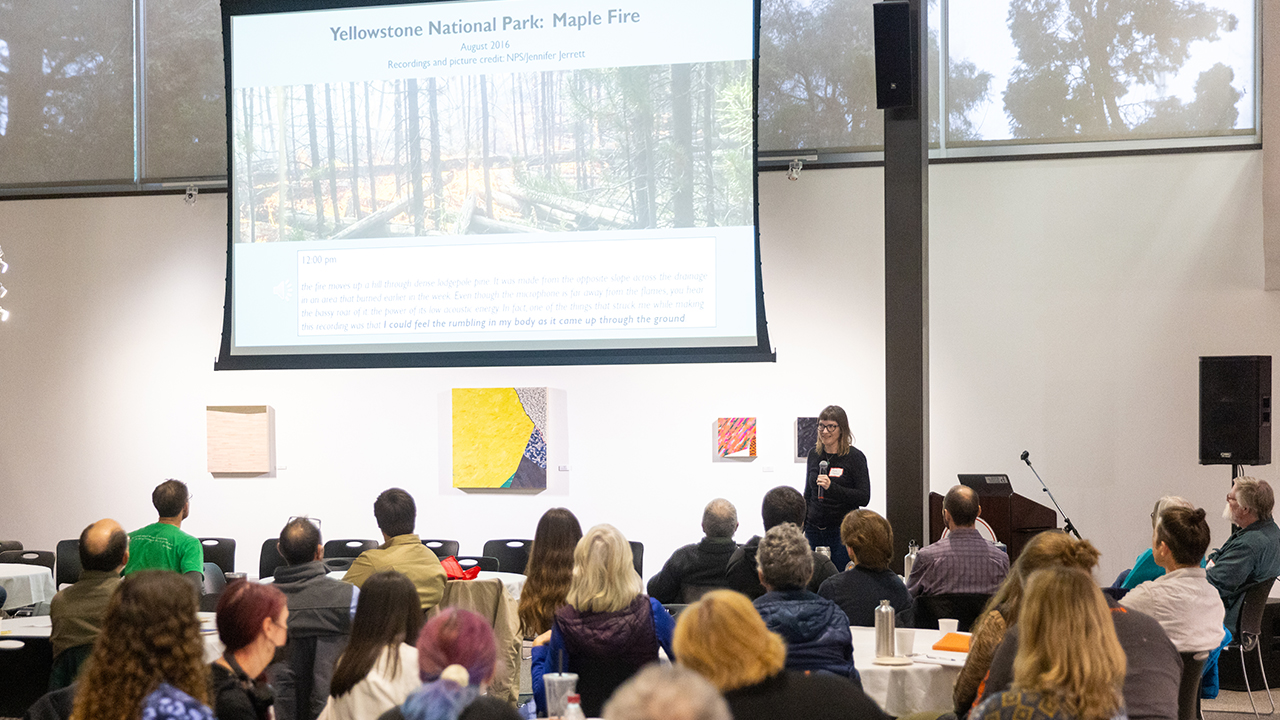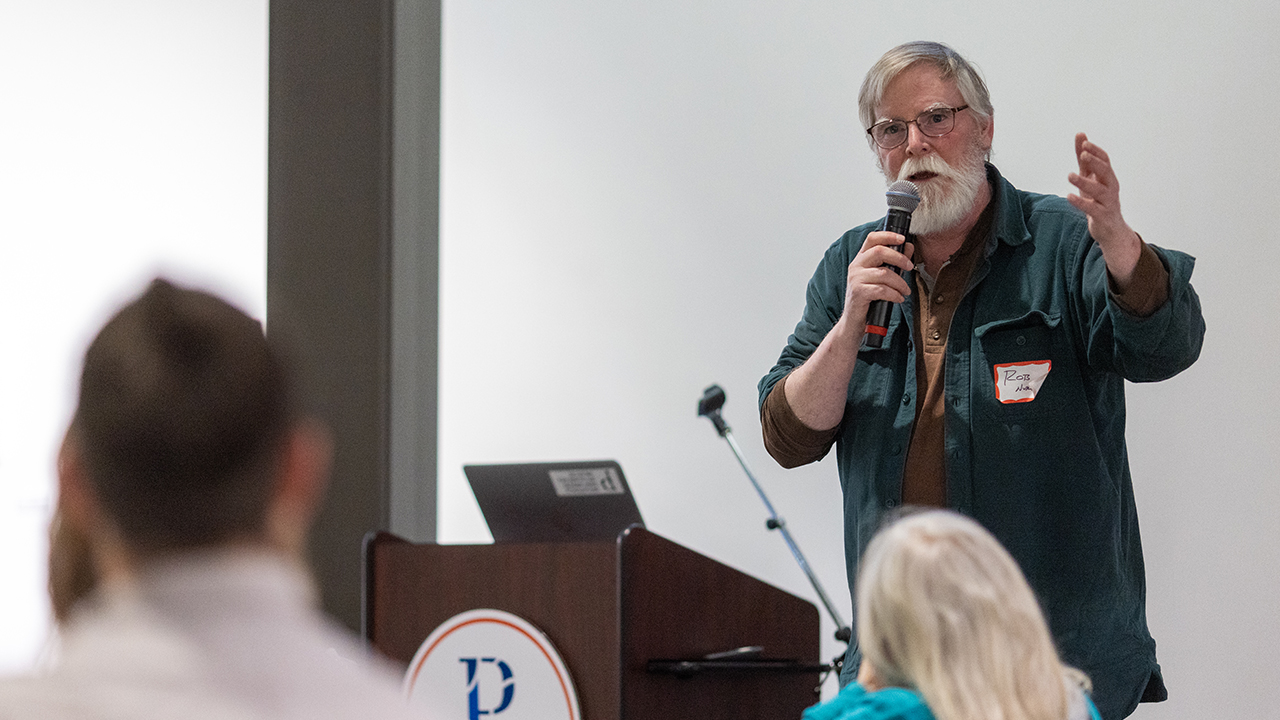

The University of Wisconsin-Platteville recently hosted the 2024 Prescribed Fire Conference, welcoming over 200 people from across the state who all share an interest in the vital use of prescribed fire to preserve the rich, biodiverse landscape of Wisconsin and the Driftless region. Participants included private landowners; students; and members of academia, state agencies and nonprofits. The conference included presentations about a diverse range of topics related to fire, from the acoustics of wildfire to the importance of Indigenous cultural burning practices to new advances in monitoring fire activity by the Wisconsin DNR.
“We are committed to being a good steward of place and enhancing the communities we serve,” remarked UW-Platteville Chancellor Tammy Evetovich at the conference. “A crucial part of this stewardship involves learning about and understanding the places we inhabit. Coming together as a community committed to learning, like we are doing today, with openness and humility to learn from indigenous cultures, is the only way to be good stewards and ensure the well-being of our land.”
Jeb Barzen, chair of the Wisconsin Prescribed Fire Council, opened the conference by issuing a challenge to attendees. He cited a recent fire needs assessment for Wisconsin that revealed the need to burn one million acres per year in order to maintain its biodiversity. The current rate is 74,000 acres per year.
“That is a substantial challenge,” said Dr. Evan Larson, conference organizer and chair of UW-Platteville’s Department of Environmental Sciences and Society. “However, the energy and excitement shared by those attending the conference make me think that we are very much up for the challenge. Jeb offered a step toward that number by getting good fire on the ground on half a million acres within 10 years. This conference is one of the ways we build our capacity to make that happen.”
Part of the challenge in reaching this goal is a limited workforce – the demand for prescribed fire operations often outstrips the number of qualified practitioners. Larson says this is another reason why he was excited for the conference to offer opportunities for collaboration.
“One of the sessions at the conference gathered fire trainers and professionals from the Universities of Wisconsin, as well as technical colleges and community colleges across the state to discuss how we can collectively meet the workforce needs in this area,” said Larson. “Wisconsin has long been a leader in conservation. We have that same opportunity to lead in our work with fire, too, especially across the Great Lakes Region. The collaborative spirit people shared at this conference gives me confidence that we will and the inspiration to help us do our part at UW-Platteville.”